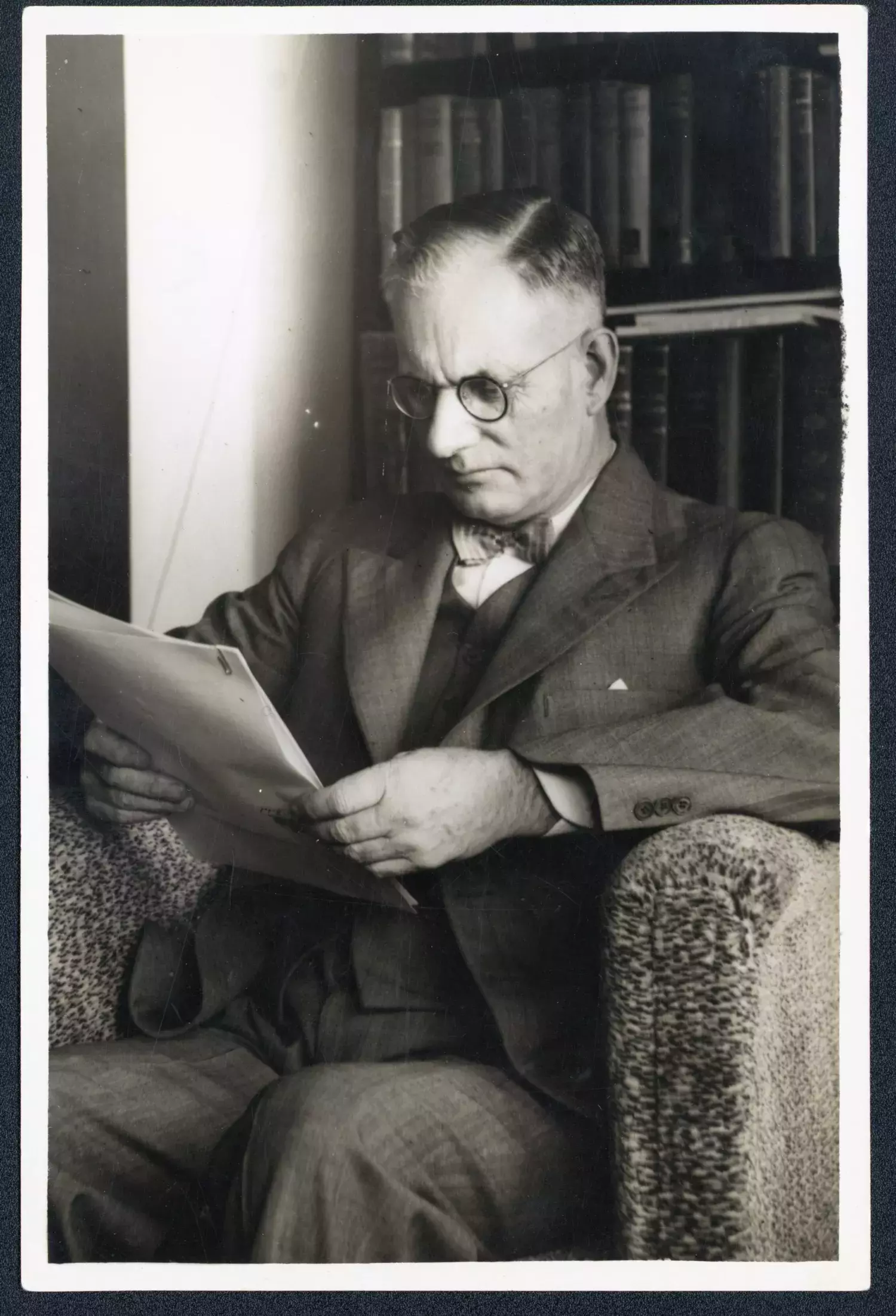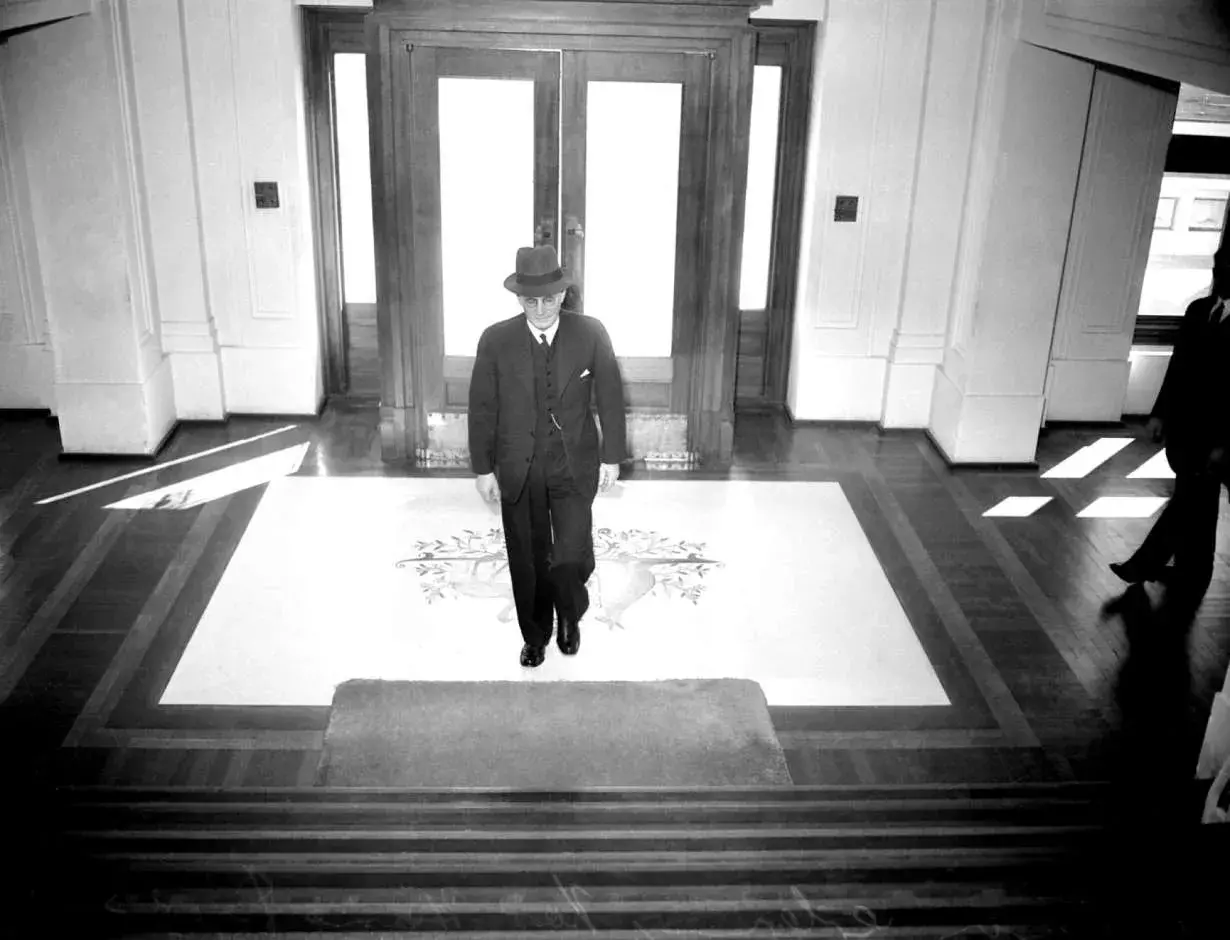JOHN CURTIN
John Curtin became Australia's 14th prime minister when Arthur Fadden's minority Coalition government lost the support of two key independents.
8 January 1885
Creswick, Victoria
5 July 1945
Canberra, Australian Capital Territory
Elsie Curtin
Australian Labor Party
Photo: News Ltd/Newspix
About
John Curtin united his party and led it to power, and united the nation in war and led it to victory. Curtin possessed a great ability to gauge the public mood, to sense how much to push for an even greater effort to support the war. As an often lonely figure, weighed down by the burden of the conflict, Curtin conveyed to Australians a shared responsibility for the outcome.

Photo: JCPML, Curtin University
Curtin was born in Creswick, the son of a policeman and, after several moves, his family eventually settled in Melbourne. After leaving school he worked as a copy boy for The Age newspaper and this gave him a taste for journalism.
He found employment with the Titan Manufacturing Company and joined the Political Labor Council. Curtin was attracted to politics by the oratory of Victorian Labor politician Frank Anstey. He joined the Victorian Socialist Party and became secretary of the Victorian Timber Workers’ Union from 1911 to 1914. Curtin became an outspoken opponent of conscription for the Australian Workers’ Union.
In 1917 he accepted the role of editor of the Westralian Worker and moved to Perth. After an unsuccessful attempt to enter Parliament in 1924, Curtin was elected to the seat of Fremantle in 1928, but lost his seat when the Scullin government was defeated at the 1931 election.
In 1934 Curtin regained Fremantle and, in 1935, became Labor leader, replacing James Scullin. Curtin became prime minister of a minority government on 7 October 1941, dependent on the support of two independents.
He only secured an outright majority after the 1943 election. Curtin’s punishing work schedule throughout the war took a great toll on his health and, in November 1944, he suffered a heart attack after returning from London. He died in office on 5 July 1945. His friend and political opponent Paul Hasluck wrote ‘he held back nothing from his service to the nation.’
MILESTONES
Daylight saving time
The introduction of daylight saving time occurs across Australia on 1 January 1942 under National Security Regulations. It is used as a means to conserve fuel and electricity.
Bombing of Darwin
On 19 February 1942 Darwin is attacked by Japanese aircraft, just four days after the fall of Singapore to Japanese forces.
General Douglas MacArthur
General Douglas MacArthur is announced as the Supreme Commander of the South-West Pacfic area. American troops were already based in Australia when he arrived on 18 March 1942 to establish his headquarters.
Japanese submarines enter Sydney Harbour
A torpedo fired from a Japanese midget submarine strikes the HMAS Kuttabul on 31 May 1942, with the death of 19 naval personnel. Two other midget submarines are captured off the Australian coast.
Federal control over income tax
The Income Tax (Wartime Arrangements) Act is passed on 7 June 1942, enabling the Commonwealth to assume control from the States of the power to levy income tax.
Post-war planning
The Department of Post-War Reconstruction is established on 24 December 1942, with Dr H.C Coombs appointed as Director-General in January 1943.
Diplomatic links with the Soviet Union
An embassy for the Soviet Union is established in Canberra on 3 March 1943, followed by the posting of an Australian diplomat to Moscow.
First women elected to Parliament
The Labor Party's Dorothy Tangney arrives in the Senate and the United Australia Party's Enid Lyons arrives in the House of Representatives, following their electoral success in the federal election of 1943.
Agreement between Australia and New Zealand (ANZAC Pact)
On 21 January 1944, the Australian and New Zealand governments sign an agreement to consult and work together on security and defence, the welfare of all Pacific peoples and the status of post-war territories.
360° VIEW
Parliament
On taking office in October 1941, Curtin announced that the task for Labor was to win the war and, until that was achieved, social reform would be deferred. Curtin established the Allied Works Council in February 1942 to arrange for the construction of major capital works essential for defence.
Additional national security regulations were passed to increase the emergency defence powers of the government. State governments were convinced to surrender their power to raise income taxes to allow Commonwealth control of revenue for the war effort.
Curtin’s decisive victory in the 1943 election resulted in a substantial parliamentary majority in both chambers and, with the imminent Japanese threat over, the focus became post-war reconstruction. A widows’ pension scheme was introduced and the goal of restoring full employment was accorded priority. In February 1944 the Coal Production Bill was introduced to deal with long term industrial unrest that threatened coal supplies.
Curtin initiated constitutional amendments in August 1944. These became known as the Fourteen Powers referendum – one power being to enabling the federal government to legislate for Aboriginal people – and sought extended Commonwealth power over production and distribution, prices, monopolies, national infrastructure, national health and family allowances. The referendum proposals were rejected by the voters.

Photo: Fairfax

